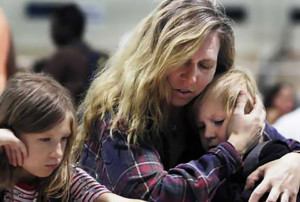 If you’re searching for a lost relative, researching descendancy is the best way to start. Eventually, you’ll find your ancestors. Then, you can begin looking into their lineage. Accordingly, you can identify their descendants until the present time. Don’t stop until you find someone who might be your relative. In the process, talking to institutions, other family members, and (if applicable) your adoptive parents can be critical.
If you’re searching for a lost relative, researching descendancy is the best way to start. Eventually, you’ll find your ancestors. Then, you can begin looking into their lineage. Accordingly, you can identify their descendants until the present time. Don’t stop until you find someone who might be your relative. In the process, talking to institutions, other family members, and (if applicable) your adoptive parents can be critical.
Getting Started
We know that finding a lost family member using little information is easier said than done. Adoption documents (if appropriate) might be of some assistance. In addition, you can also use ancestry trees, online directories, and people finder sites. There are many such sites today, and they all aim to help you find lost loved ones. All you need to do is type in their name, and you might unearth a phone number or current address. The right service will retrieve the details you need to get in touch with this person.
Gather Information
First, collect as much information as you can about your lost relative. Think about what hobbies and interests they might have. Their date of birth will facilitate the search a great deal. Any details you can remember about them, such as likes and dislikes, will help uncover further information in a search.
Start looking as soon as you’ve collected all the information you were able to. Moreover, don’t postpone the search. The quicker you begin, the better your prospects.
DNA Test
Some people have been able to find biological family members after taking a DNA test. You can expect to get a match in the DNA testing service’s database if your lost family member also took a test with them. Obviously, it’s best to choose one or more leading DNA testing providers to maximize the likelihood of a positive outcome. If another family member has taken the test, this can help you find your missing relative, too.
Check Trade Organization Records
Local trade organization records often contain valuable information. If you know your lost family member’s occupation, you could browse relevant databases of any relevant trade organizations and perhaps even find out where they currently live or work.
Turn to Social Media
Social media networks can prove invaluable when you’re looking for someone. The go-to search option is Facebook, but it’s not your only option. You can also search LinkedIn, Twitter and Instagram for any information regarding your most family member, or better yet, their profile. Maybe they created a profile in the hope you’d find them, and finding it can be crucial to your search. Once you do, reaching out to them is only a matter of time.
However, finding your lost family member’s social media profile can also be unlikely. However, you are more likely to find profiles of other relatives or friends who might know something about your lost loved one’s whereabouts.
Important Considerations
When we’re looking for a long-lost relative or friend, we need to ask ourselves if they want to be found and how they’ll react if they don’t want to be contacted. Even information as sure as a DNA match can fail to provide closure. You may believe you’re ready to begin rebuilding your relationship with your lost family member, but your experience might be unexpectedly painful. They might be surprised or even shocked by your messages.
You never know what will happen when you find them, so tread carefully and be considerate. If you find a profile somewhere that you feel might be theirs, go ahead and message them, but don’t expect an immediate reply. Do check your inbox regularly, even after some time has passed without getting a response.


